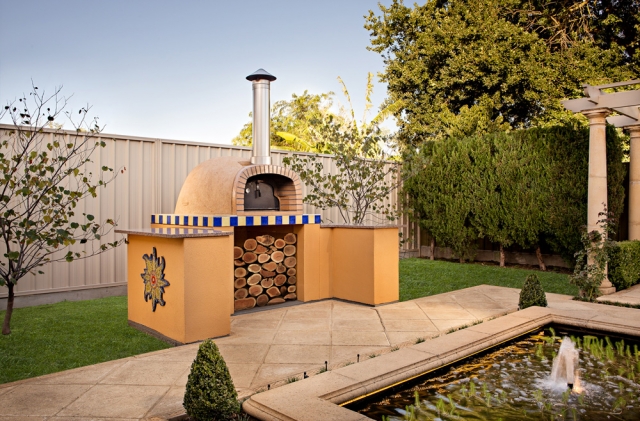Hot tips for installing a wood oven
Wood ovens have become a way for homeowners to ignite their outside-entertaining area, and for those looking to bring the traditional cooking method into their backyard, there are some tips to consider.

Although the barbeque has long been a staple for the Australian backyard, many entertainers are looking for greater versatility for their alfresco area.
Wood ovens have become an option to add some spark to your backyard as they not only add a famously rich smoky flavour to food but also allow an authentic Mediterranean feel.
As a cooking method dating back to ancient times, wood ovens have risen in popularity over the years, making them one of the most traditional of modern trends to add value to any home.
While there’s much to pick from when it comes to a wood oven, Premium Property speaks to the experts on tips to make the choice less hazy.
Safety first
Although you don’t need council approval for a wood oven under two metres in height in South Australia, there is a code of practice you need to follow before you start slinging wood-fired food.
CFS Compliance Officer, Phil McDonough wrote the Wood Ovens Code of Practice (COP) in South Australia and says construction of the wood ovens needs to comply with the code.
COP compliance guarantees there is minimal risk of sparks and embers from leaving the flue and starting a fire.
“They should be constructed in such a way that it prevents sparks and embers from exiting the burning chamber,” Phil says.
“It should have a flue fitted which is at least 1200mm high and have a spark arrestor included.”
Failure to comply with this code may burn a hole in your bank account, resulting in fines of up to $5000 or one-year imprisonment for first-time offenders.

Consider the location of your oven
Maurelio Gabrielli of Al Forno learnt his craft of building brick ovens in Italy over 30 years ago and says an oven’s location can determine how often you can reap the benefits.
“The main advice we give people the is advice to put it somewhere undercover,” Maurelio says.
“That way, you can use it all year round.”
While undercover wood ovens allow for delicious pizzas at any time, Phil advises homeowners to find an area that is well ventilated, close to a working hose and at least four metres from flammable materials.
“Consideration should be given to what vegetation is planted around the oven and what flammable materials are in close proximity,” Phil says.
“Also, good ventilation is required to ensure that the area is not subjected to the accumulation of smoke.”

Have a solid foundation
“It’s a heavy structure so you’ve got to have a solid foundation,” Maurelio says.
When installing a wood oven in your backyard, you need to consider what materials you’ll use for the stand.
Maurelio says any strong material such as brick or stone should do the trick in keeping your oven elevated.
If you’re the craftier type, you can tile the stand to create a feature piece or decorate it to suit the theme of your entertaining area.
Depending on the structure of your outdoor area, you may need to work with a professional landscaper though Maurelio says this is only necessary if you’re planning on placing your oven on an uneven surface or installing a larger brick-oven.
Size matters
While it can be tempting, Maurelio warns against opting for the largest furnace you can find just for the sake of it.
“You don’t need a big one,” Maurelio says.
“Unless you think ‘we want to make bread every fortnight and we want to make 30 loaves of bread’.”
Consider the size you want your wood oven to be by looking at the dimensions of your outdoor area and the amount you want to be cooking at one time.
For example, an oven with an internal dimension of 600mm x 600mm can fit roughly two to three 9-inch pizza trays or one large roasting tray.

Pick your shape wisely
When choosing a shape for your wood oven there are two main varieties: dome and barrel, with each shape differing in how they retain heat.
Tony Barone has more than 40 years of experience working in restaurants and now owns mobile wood oven catering service, Wood Oven Express and favours dome-shaped ovens.
Tony says the igloo form of a dome wood oven allows for even heat retention.
“The temperature circulation in the chamber allows for even heating of the oven,” Tony says.
“This allows the food to cook evenly.”
If you’re looking to cook a suckling pig and the likes with your oven, Maurelio says a barrel shape is favourable due to its larger, tunnel form while hemispherical.
Dry hardwood is the best option for fuel
As the name suggests, these ovens typically use wood to heat their kilns, but modern gas and electric ovens are emerging in domestic kitchens.
If you’re looking to keep it traditional with wood as your chosen fuel, Tony recommends dry hardwood that isn’t chemically-treated, glued or painted.
“I would say red gum is the best wood to use,” Tony says.
“It burns slowly and a hotter temperature to allow you to get the temperature right.”



